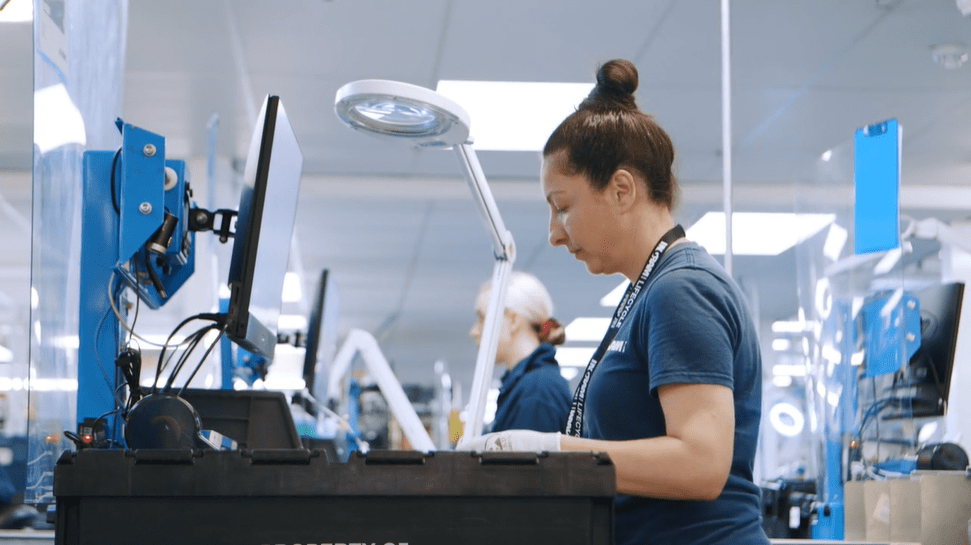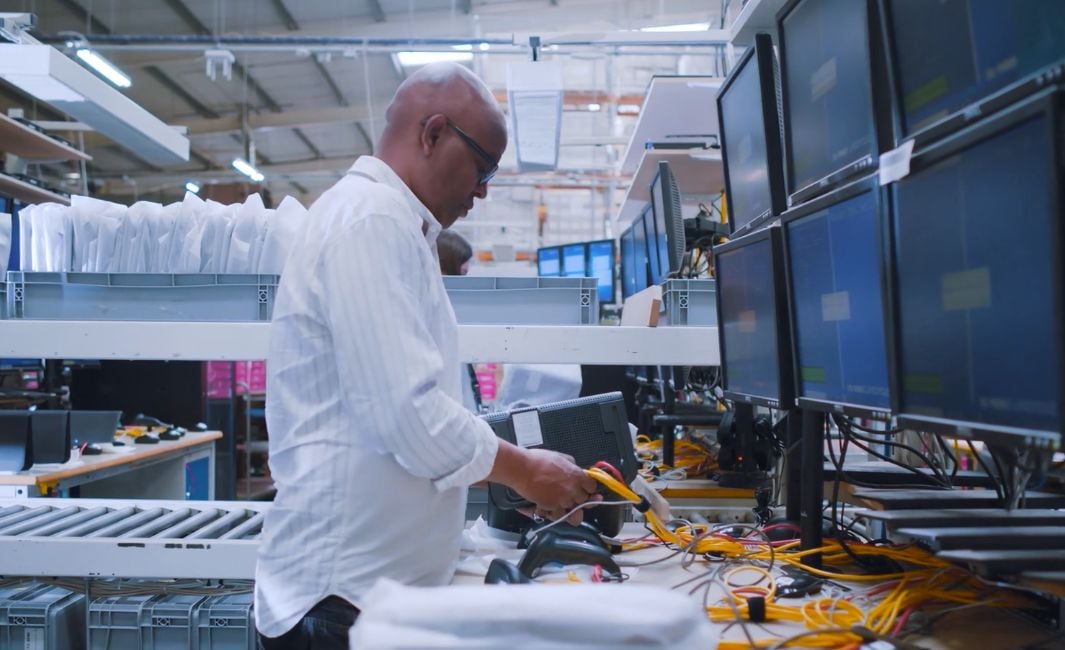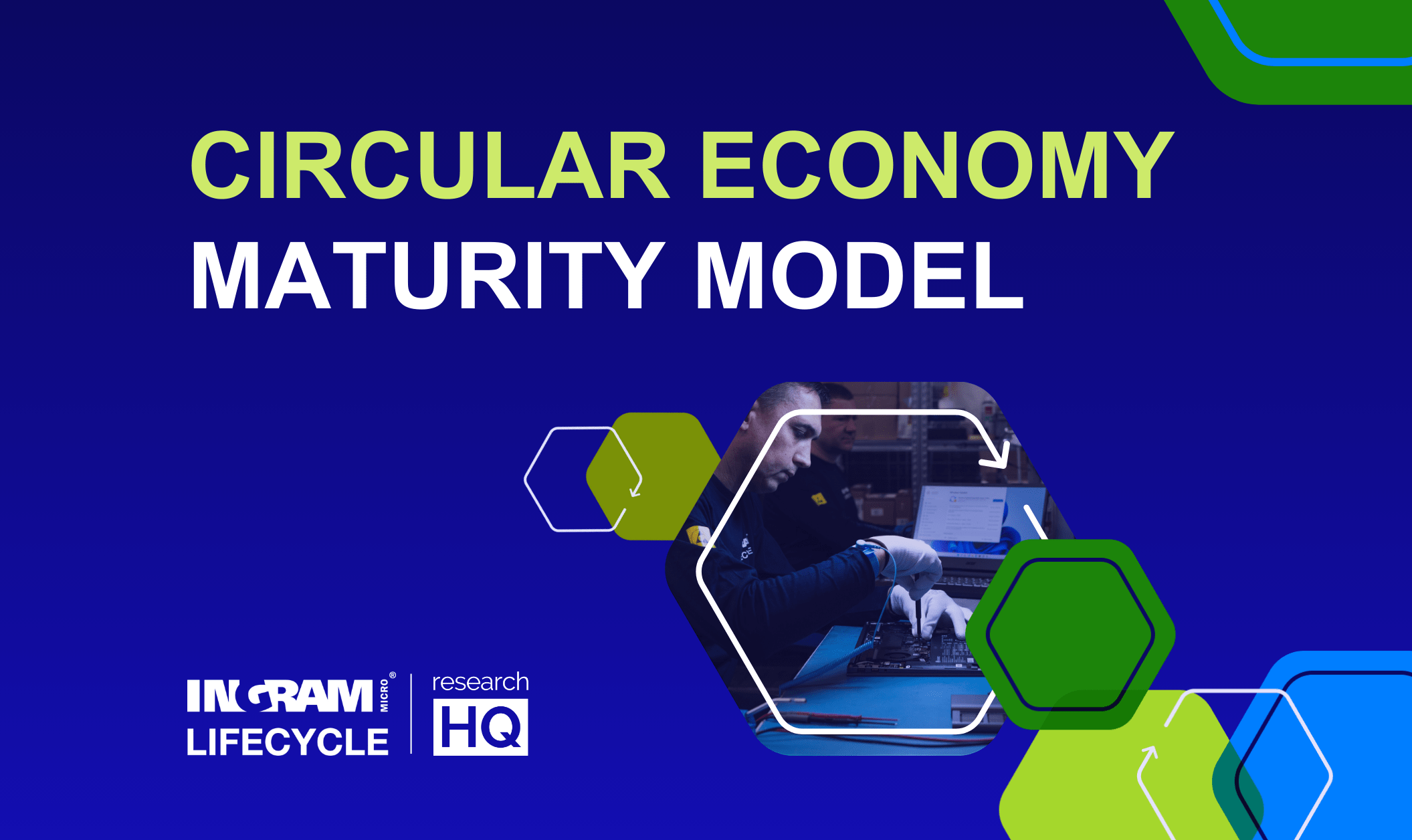Is your business struggling to keep abreast of the volume of returns it receives? Understanding why products are being returned can be the first step towards prevention.
Ingram Micro Lifecycle manages technology product returns for many reputable household brands. These include mobile network operators and OEMs (Original Equipment Manufacturers).
Generally, reasons prompting returns fall into one of three categories; mismatch against needs, issues with ordering or delivery, or fraud/abuse of the returns policy. We examine these in more detail below.
Ecommerce impacts on return rates
The rise of ecommerce has significantly influenced return rates for electronic products. Online shopping offers convenience but also comes with a higher return rate compared to brick-and-mortar stores. Consumers are three times more likely to return products purchased online, in part due to the inability to physically inspect items before buying.
Furthermore, the ease of comparing prices online contributes to returns. Consumers might buy a product and then find it cheaper elsewhere, prompting them to return the original purchase. Additionally, delays in delivery or receiving incorrect items can lead to customer dissatisfaction and returns.
The problems with growing returns
Processing returns increases operational costs. The more returns you process, the higher the cost implications are. However, returns that are graded, repaired, or repackaged can be remarketed to recover a portion of the original value, though these items will command lower prices due to their used status. Managing this process also requires additional time and resources.
There are also sustainability impacts, too, even more so for fraudulent returns. Every item that comes back to you must be processed and assessed. In some cases, these items won't be what you're expecting. These must be sustainably disposed of if they're ineligible for resale. The associated logistics and packaging add to the growing financial and sustainability costs.
You'll need the space to store incoming packages ahead of processing and then space for goods that need to be moved onwards. Suitable infrastructure is required, digitally too, to accommodate the processes for handling returns, logging all returns data. Staff will need to be trained to understand what to look for in the returns, how to evidence fraudulent returns, and more.
Common legitimate reasons for returning electronics
Consumers return electronic products for various legitimate reasons that can significantly impact retailers and manufacturers. One of the most common reasons is ordering the wrong product. This can include mistakes in selecting the correct model, size, or color, especially when shopping online. For instance, a customer might accidentally purchase a smartphone with less memory than they intended or a laptop without the necessary specifications for their needs. They may also have accidentally been sent the wrong item, when a hiccup has occurred as part of the shipping and despatch process. The shipping may have taken too long and the customer has purchased an alternative elsewhere during the delay. The result is they have two products and need only one.
Another prevalent cause is that the product fails to meet customer expectations. This often occurs when there is a mismatch between the advertised features and the actual performance. For example, a consumer might expect a gaming console to have certain capabilities based on promotional material, only to find it lacking upon use. Similarly, switching between operating systems (like from iOS to Android) can lead to dissatisfaction due to differences in user interface and functionality.
Buyer's remorse is also a significant factor, particularly for high-cost items. After making a purchase, some consumers might rethink the financial commitment and decide that the expense outweighs the product's value.
Additionally, technical faults, whether real or perceived, contribute to returns. Issues can range from genuine defects to difficulties in using certain features, or even damage that occurred during shipping.
The tech may have been purchased as a gift, for example, a gaming console as a birthday present, or an airfryer as a Christmas gift. The recipient may decide they don't want it or it's surplus to their requirements, and it gets sent back as a return.
Fraudulent activities leading to returns
While legitimate reasons for returns are common, fraudulent activities also play a role in the volume of returns. One such activity is money laundering, where individuals use stolen credit cards to purchase electronics and then seek a cash refund. This can be mitigated by ensuring that refunds are processed back to the original payment method or offered as store credit.
Another fraudulent practice involves returning incorrect items. For example, customers return different items than those they purchased, such as buying a new product and returning an older, used version in its place. We've experienced returns fraud where, instead of an electronic device, we've received baby wipes, soap, sweets, and even scrap metal.
There are also instances where a customer might claim that a product arrived damaged or defective when it was, in fact, in perfect condition, in order to receive a replacement or a refund.
Scalping is another concern, especially with products that are in high demand or limited edition. Scalpers purchase these items in bulk with the intent to resell them at a higher price. If they are unable to sell the products, they return them for a refund.
Lastly, there's the issue of "bricking", where fraudsters strip components from a device before returning it, rendering it useless. The innards of the product are kept for use elsewhere.
Strategies to prevent returns and improve customer experience
Reducing return rates while maintaining customer satisfaction requires a multifaceted approach. One effective strategy is to enhance product descriptions and images online. Providing detailed, accurate information helps set realistic expectations and reduces the likelihood of returns due to unmet expectations.
Improving packaging and shipping processes can also minimize returns caused by damage during transit. Investing in robust packaging materials and reliable logistics partners ensures that products arrive in good condition.
Additionally, offering comprehensive customer support can help address user difficulties with electronic products, potentially resolving issues without the need for a return. This includes explaining instructions in more detail or offering videos and tutorials to make the customer more comfortable with the product's use and capabilities.
Implementing a lenient but clear returns policy can also help. Allowing a longer returns window provides customers with the confidence to make purchases, knowing they have ample time to decide that the product is right for them. However, it's crucial to balance this with measures to prevent abuse, such as tracking return patterns and flagging suspicious activities.
Effective returns policies that balance flexibility and control
Crafting an effective returns policy involves balancing customer satisfaction with the need to control costs and prevent abuse. A key component of this is offering free returns, which encourages purchases by reducing perceived risk. However, this can also lead to increased costs and potential abuse.
To mitigate these issues, some retailers charge a small fee for returns, which can deter frivolous returns without significantly impacting genuine customers. Offering store credit instead of cash refunds can encourage repeat business and reduce the financial impact of returns.
Clearly communicating the returns process and conditions is essential. Customers should understand what constitutes a valid return and the steps they need to take. This transparency helps manage expectations and reduces frustration, leading to a better overall experience.
Utilizing data and feedback to minimize future returns
Leveraging data and customer feedback is crucial in reducing future returns. Analyzing return reasons can provide insights into common issues and help identify areas for improvement. For instance, if a particular product frequently gets returned due to technical faults, it might indicate a need for better quality control or clearer usage instructions.
Customer feedback can also inform product development and marketing strategies. Understanding why customers are dissatisfied with a product allows companies to address these concerns in future iterations or through better communication of product features.
Implementing advanced analytics and machine learning can further enhance returns management. Predictive models can identify patterns and indicate which products are more likely to be returned, enabling proactive measures to reduce returns and improve customer satisfaction.
By addressing the reasons behind returns and implementing effective strategies, retailers and manufacturers can reduce return rates, enhance customer satisfaction, and improve their bottom line.
Protect against the rising tide of returns today
Effectively managing returns requires a comprehensive understanding of both legitimate and fraudulent return drivers, as well as a proactive approach to process improvement. By combining robust returns policies, detailed product information, and data-driven strategies, businesses can reduce return rates and protect profitability. Ultimately, fostering transparency and continuously refining operations positions companies to meet evolving customer expectations and strengthen long-term customer relationships.
If managing returns internally is becoming overwhelming, partnering with a specialist such as Ingram Micro Lifecycle can provide crucial support. Our white-label returns centres are designed to efficiently process incoming products, ensuring meticulous testing and grading to minimize depreciation and maximize value recovery. Our extensive end-to-end returns management solutions include recommerce, enabling the resale of uplifted products on the secondary market.
Get in touch today to discuss your returns management requirements and how we can integrate our solutions with your business.
Related articles:













